[ENG]
After a short walk around the City of London, it was time to return again to the south side of the Thames. The most convenient route for this purpose was through a footbridge called Millennium Bridge. The name was to refer to the year in which the bridge was put into operation and was to become a new symbol of London, whose form and structure was to become a living testimony to the power of the human mind at the turn of the second and third millennium. It turned out that the Footbridge was designed in 1998 by three large entities: the Arup Group design office, the Norman Foster architectural office and the sculptor Anthony Caro. The effect was stunning, especially after the opening of the footbridge on June 10, 2000 and hundreds of Londoners boarded it.
After entering the footbridge, one of them immediately got off it because the entire structure was vibrating alarmingly. Londoners affectionately named the bridge "Wobbly Bridge". The result was that two days after the bridge opened, this display of human genius was closed for two years to correct design errors. A huge image disaster…
[PL]
Po krótkim spacerze po Londyńskim City przyszedł czas aby wrócić ponownie na południową stronę Tamizy. Najwygodniejsza w tym celu droga prowadziła przez kładkę dla pieszych zwaną Millennium Bridge. Nazwa miała nawiązywać do roku w którym most został oddany do użytkowania i miał stać się nowym symbolem Londynu, który swoją forma i konstrukcja miał stać się żywym świadectwem potęgi ludzkiego umysłu z okresu przełomu drugiego i trzeciego tysiąclecia. Wyszło tak, że Kładka została zaprojektowana w roku 1998 przez trzy wielkie podmioty biuro konstrukcyjne Arup Group, biuro architektoniczne Normana Fostera i rzeźbiarza Anthony Caro. Efekt był oszałamiający, a zwłaszcza po otwarciu kładki która miała miejsce 10 czerwca 2000 i wejściu na nią setek londyńczyków.
Wieku z nich po wejściu na kładkę momentalnie z niej zeszła, ponieważ cała konstrukcja niepokojąco drgała. Londyńczycy pieszczotliwie nazwali most imieniem "Wobbly Bridge" czyli chwiejny most. Efekt był taki, że dwa dni po otwarciu mostu, ten przejaw ludzkiego geniuszu został zamknięty na dwa lata w celu poprawienia błędów projektowych. Potężna katastrofa wizerunkowa…
[ENG]
However, currently the footbridge works without any problems and efficiently connects the Cathedral of St. Paul with one of the most famous museums of contemporary art, Tate Modern in London. The museum building was once the hall of the Bankside Power Station, designed by Giles Gilbert Scott and built between 1947 and 1963. The purpose of the building changed in 2000, when, thanks to the design of the architectural studio Herzog & de Meuron, the power plant was turned into a museum of contemporary art. In addition to the permanent exhibition, from October to March, Tate Modern presents works by contemporary artists, commissioned by the museum. One such exhibition was an installation called Kui Hua Zi (Sunflower Seeds) created by artist Ai Weiwei. The work consisted of one hundred million individually crafted porcelain sunflower seeds. These porcelain seeds were scattered all over the floor of the Tate Modern hall and created a layer of artificial sand several centimeters thick on which museum visitors could walk. Unfortunately, people walking on the porcelain sunflower seeds crushed them, which caused the installation to become dusty, and inhaling this porcelain dust could be dangerous to the health of visitors. Then it was decided to forbid walking around the installation. The entire work of art weighed 150 tons. Each seed was made by hand and was first shaped, then painted and fired. 1,600 workers were involved in creating the seeds, who spent two and a half years creating seeds in one of the porcelain factories in the Chinese city of Jingdezhen. Generally, the installation was intended to draw attention to how huge China is, but also to how little their work time is worth, and that individual rights in such a large mass may not be respected and no one will pay attention to it.
[PL]
Natomiast obecnie kładka działa już bez zarzutów i sprawnie łączy Katedra św. Pawła z jednym z najbardziej znanych muzeów sztuki współczesnej Tate Modern w Londynie. Budynek muzeum był kiedyś halę elektrowni Bankside Power Station zaprojektowaną przez Gilesa Gilberta Scotta i budowaną w latach 1947–1963. Przeznaczanie budynku zmieniło się w roku 2000 kiedy to za sprawą projektu pracowni architektonicznej Herzog & de Meuron z elektrowni zrobiono muzeum sztuki współczesnej. Poza wystawa stałą od października do marca prezentowane są w Tate Modern prace artystów współczesnych, wykonane na specjalne zamówienie muzeum. Jedna z takich wystaw była instalacja o nazwie Kui Hua Zi (Nasiona słonecznika) stworzona przez artystę Ai Weiwei. Praca składała się ze stu milionów indywidualnie wykonanych porcelanowych nasion słonecznika. Owe porcelanowe nasiona zostały rozsypane na całej podłodze hali Tate Modern i utworzyły na niej kilkunastu centymetrowej grubości warstwę sztucznego piasku, po którym mogli chodzić odwiedzający muzeum. Niestety, ludzie chodzący po porcelanowych nasionkach słonecznik kruszyli je, przez co instalacja zaczęła się pylić, a wdychanie tego porcelanowego pyłu mogło być groźne dla zdrowia zwiedzających. Wtedy zdecydowano się zabronić chodzenia po instalacji. Całe dzieło sztuki ważyło 150 ton. Każde nasiono było wykonywane ręcznie i najpierw zostało uformowane, później pomalowane i wypalone. W tworzenie nasionek zaangażowanych było 1600 pracowników, którzy przez dwa i pół roku tworzyli nasionka w jednej z fabryk porcelany w chińskim mieście Jingdezhen. Generalnie instalacja miała zwrócić uwagę na to jak ogromne są Chiny, ale również o tym, jak niewiele jest warta ich czas pracy, oraz, że prawa jednostki w takiej wielkiej masie mogą nie być respektowane i nikt na to nie zwróci uwagi.
https://en.wikipedia.org/wiki/Sunflower_Seeds_(artwork)
[ENG]
Unfortunately, there was no interesting exhibition at Tate Modern during our visit. I don't know anything about contemporary art at all, and I'm a little wondering why we even entered this institution. Some strange bags resembling a folk-made dragon for some village fun, another exhibition showing a film showing a naked woman and a piglet walking in a meadow and eating apples, another exhibition with broken windows that I don't really know what they were supposed to symbolize and many more other installations that I didn't understand very well . To sum up The building and surroundings of Tate Modern are very pleasant to visit, and the interior depends on it. History has shown that there were many interesting installations exhibited there, but at the time we were there we didn't come across anything interesting, but let me emphasize once again that I know nothing about contemporary art.
[PL]
Niestety podczas naszego zwiedzania w Tate Modern nie było żadnej ciekawej wystawy. Nie znam się całkowicie na sztuce współczesnej i trochę się nad tym zastanawiam, o co w ogóle wchodziliśmy do tej instytucji. Jakieś dziwne worki przypominające ludowej roboty smoka do jakiejś wiejskiej zabawy, na innej wystawie film pokazujący nagą kobietę i prosie chodzące po łące i jedzące jabłka, kolejna wystawa z potłuczonymi szybami, które nie bardzo wiem co miały symbolizować i dużo więcej innych instalacji, których średnio rozumiałem. Podsumowując Budynek i otoczenie Tate Modern jest bardzo przyjemne do zwiedzenia, a wnętrze to zależy. Historia pokazała, że wystawianych tam było wiele ciekawych instalacji, ale akurat w czasie kiedy my tam byliśmy jakoś nie trafiliśmy na nic ciekawego, no ale zaznaczę kolejny raz, że na sztuce współczesnej nie znam się kompletnie.
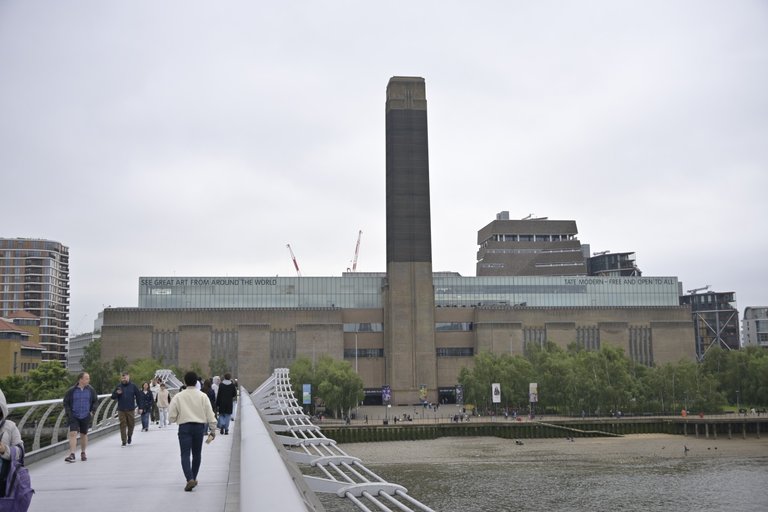
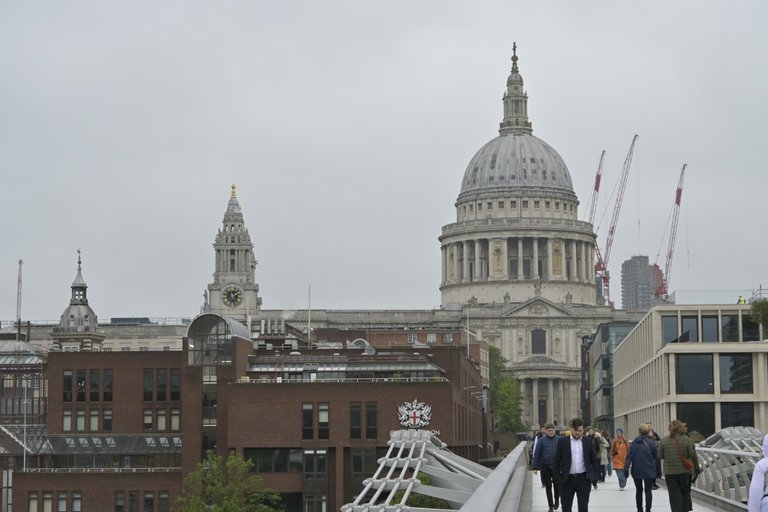
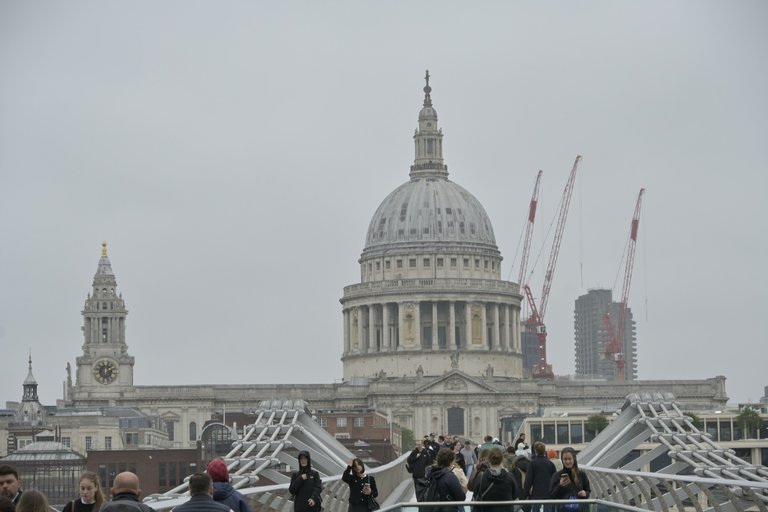


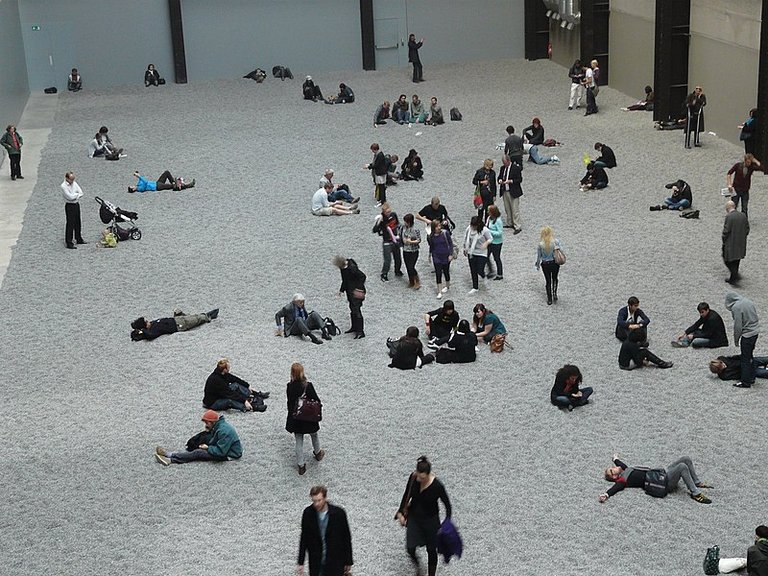

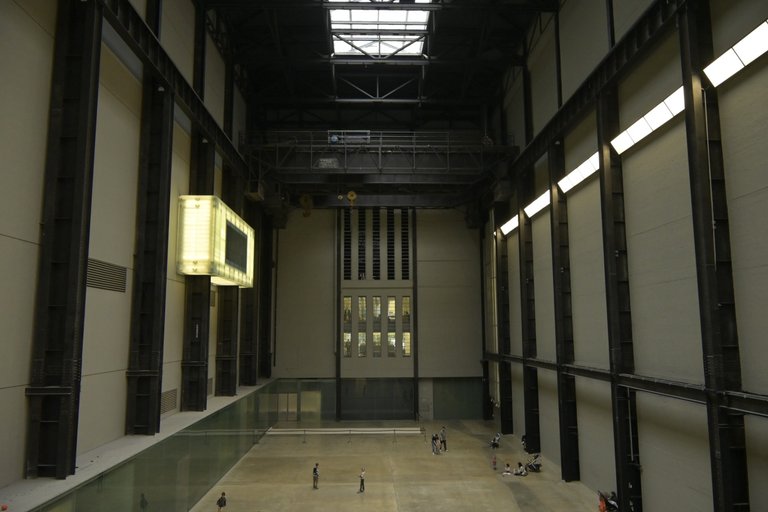
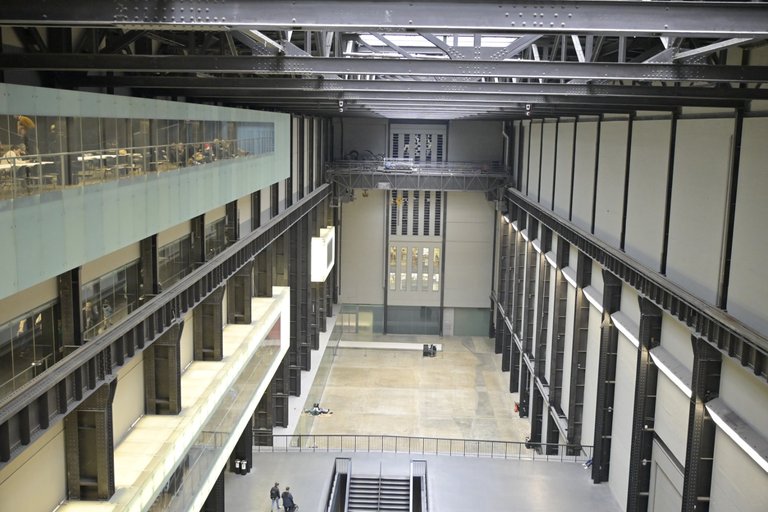
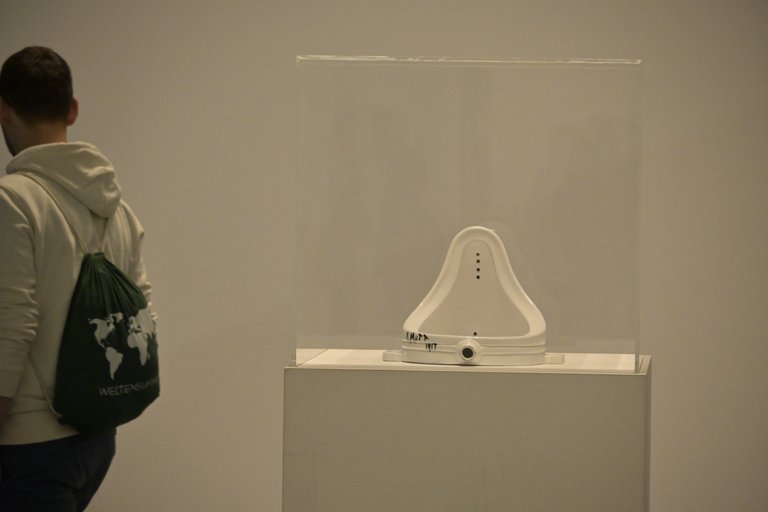
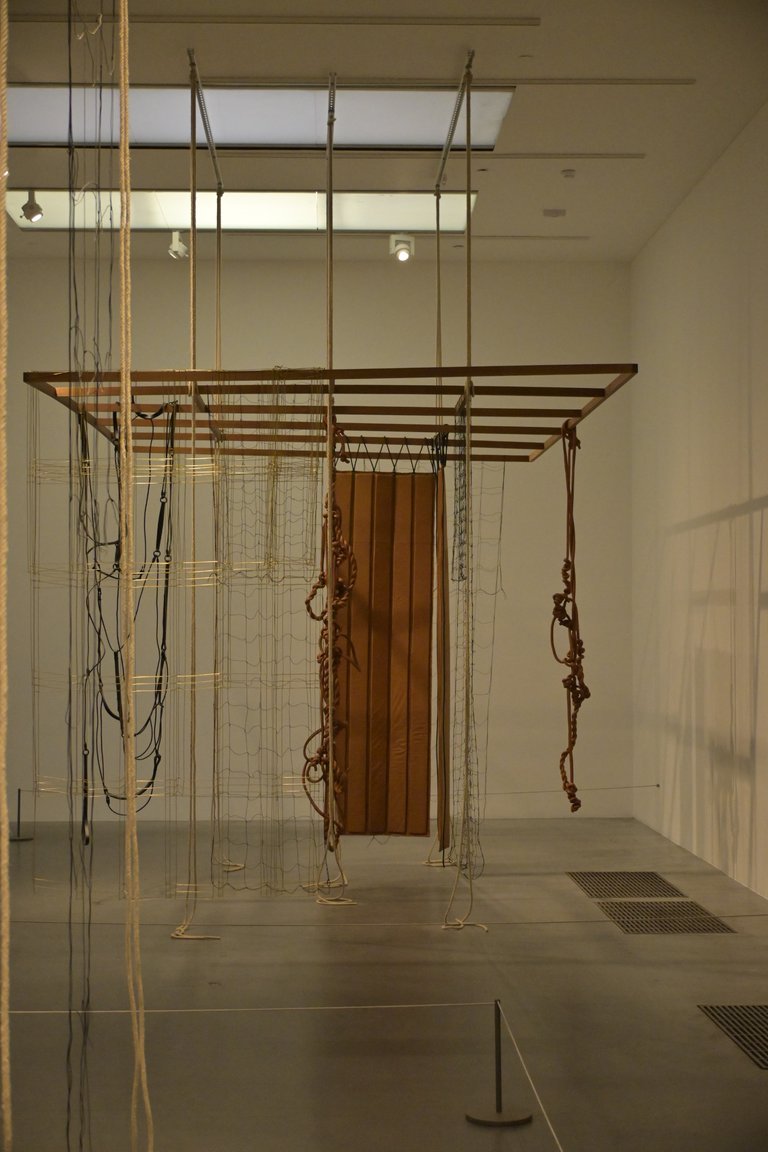
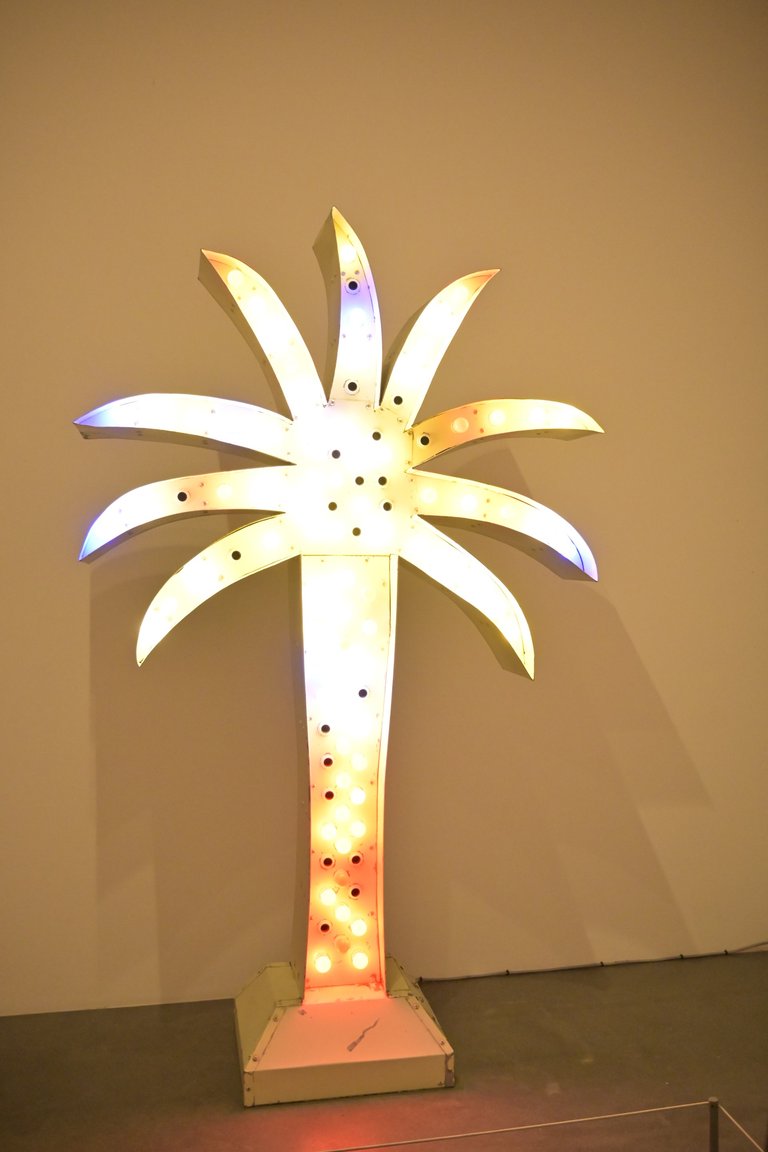
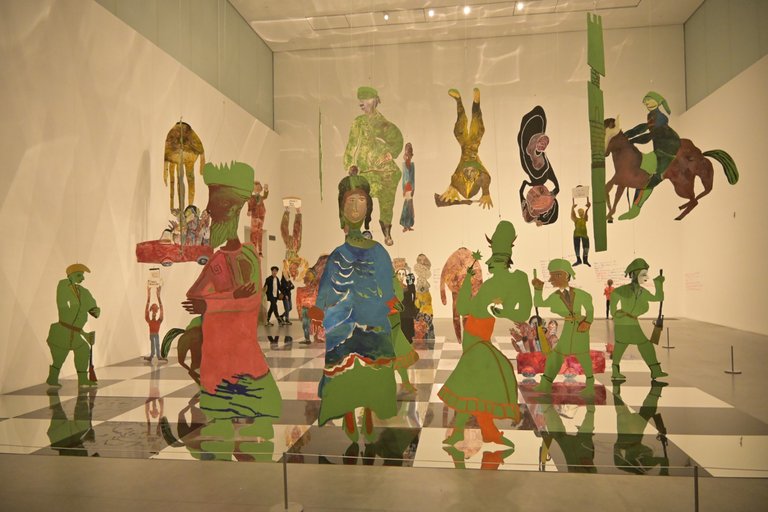
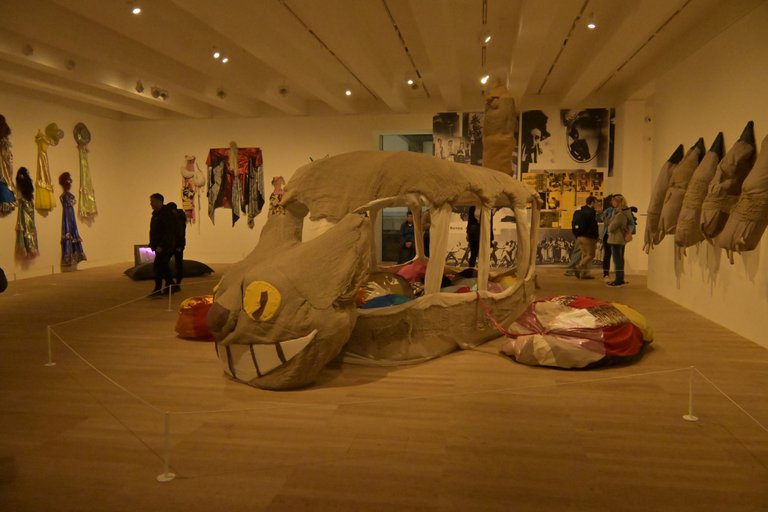
Congratulations, your post has been added to the TravelFeed Map! 🎉🥳🌴
Did you know you have your own profile map?
And every post has their own map too!
Want to have your post on the map too?
- Go to TravelFeed Map
- Click the create pin button
- Drag the marker to where your post should be. Zoom in if needed or use the search bar (top right).
- Copy and paste the generated code in your post (any Hive frontend)
- Or login with Hive Keychain or Hivesigner and click "create post" to post to Hive directly from TravelFeed
- Congrats, your post is now on the map!
PS: You can import your previous Pinmapple posts to the TravelFeed map.Opt Out
Congratulations, your post has been added to WorldMapPin! 🎉
Did you know you have your own profile map?
And every post has their own map too!
Want to have your post on the map too?
Congratulations @olusiu! You received a bright smile from TravelFeed. Our eyes were beaming while reading your post. 😁
Thanks for using TravelFeed!
@for91days (TravelFeed team)
PS: Did you know that we launched the truvvl app? With truvvl, you can create travel stories on the go from your phone and swipe through nearby stories from other TravelFeed users. It is available on the Apple App Store and Google Play.
Hiya, @glecerioberto here, just swinging by to let you know that this post made it into our Honorable Mentions in Travel Digest #2244.
Your post has been manually curated by the @worldmappin team. If you like what we're doing, please drop by to check out all the rest of today's great posts and consider supporting other authors like yourself and us so we can keep the project going!
Become part of our travel community: